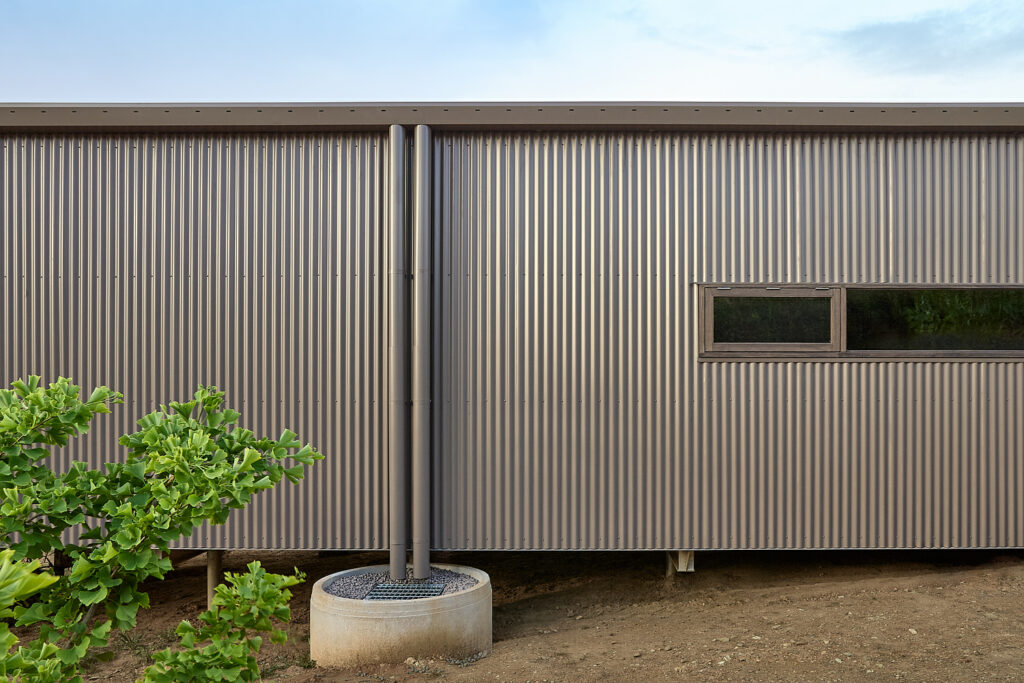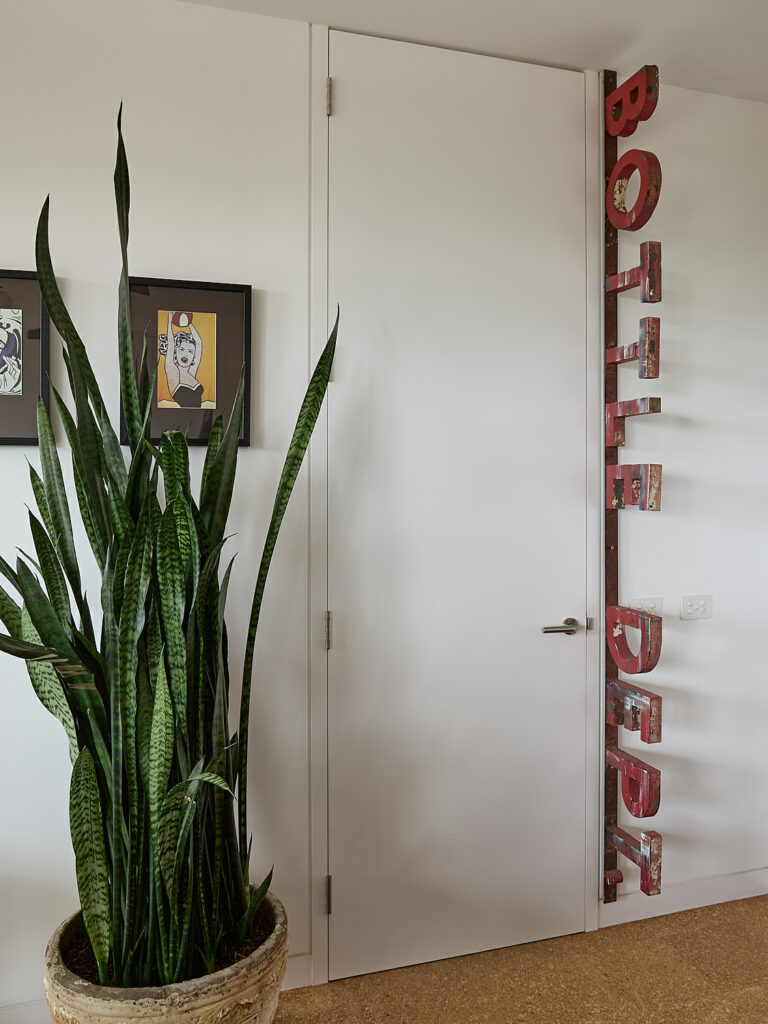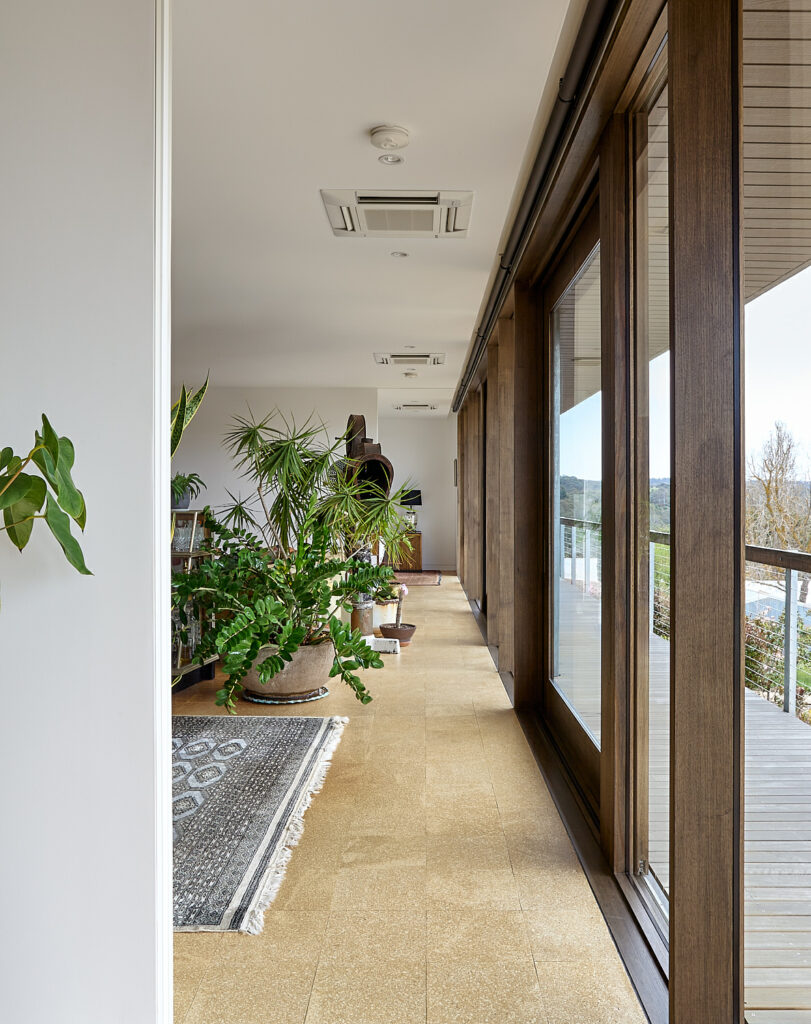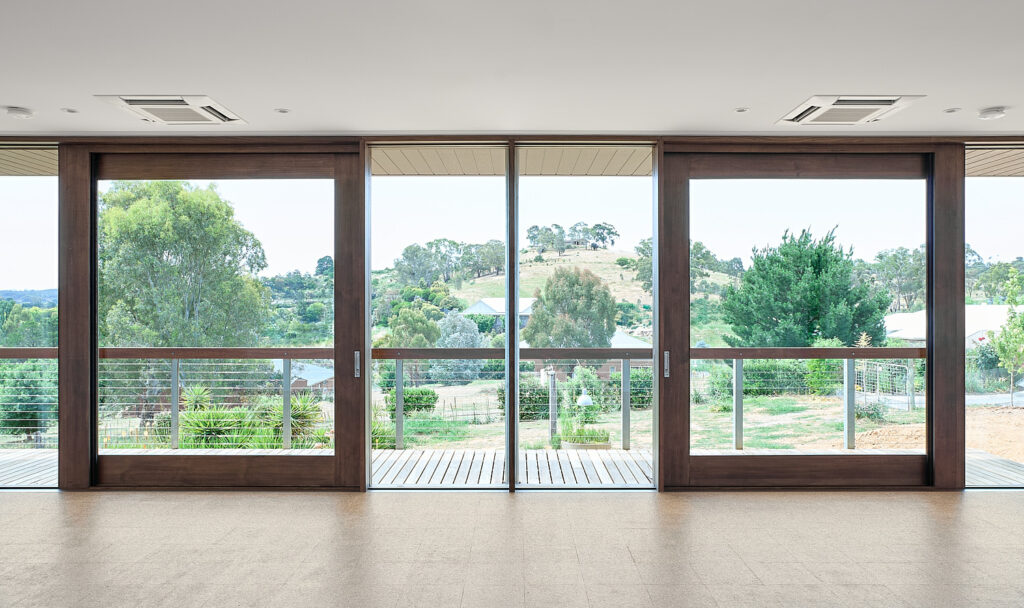The design for Residence N began with a client looking for a new home away from the city; a place where he could combine his professional and private life in the company of his dogs and surrounded by his eclectic collection of antiques, furniture, artefacts and plants. Inspiration stemmed from the client’s admiration for Open Studio‘s earlier project, Residence J&C in Somers, and aimed to develop similar themes.
The property, located at the edge of Castlemaine – a regional town in Victoria – had until recently been part of a much larger property used for farming and was unfortunately cleared of trees. It has a substantial fall to the North-West and enjoys views towards the hills and plains in the distance. The architects identified the ideal house placement during the initial site visit. Instead of facing the road access, the house was rotated and pushed towards the South, defining the boundary and leaving a substantial North facing garden.

Discussions about post-war architecture and Open Studio‘s enduring fascination with Lina Bo Bardi’s 1950 Glass House significantly influenced the design. The architectural studio treated the house as an observation deck that ignores the topography and floats over the landscape. It prioritized sun exposure and the panoramic views over conforming to the land’s contours. The result is a “viewing platform” anchored to the high end of the site and supported on eight steel columns. Elevating the floor level of the house is not only ideal for capturing distant views but also produces a particular psychological effect. By excluding the middle ground from view, the landscape appears more horizontal and pictorial, simultaneously separating and connecting the viewer and the landscape, while reinforcing a sense of detachment and shelter
The overall design follows the simplest compositions, with two legible horizontal elements: the elevated platform and the roof. The roof line extends to form a simple carport and a covered walkway. This abstracted veranda is not a nostalgic reference but a device mediating the relationship between the occupant and the setting. It not only modulates the light but also establishes a sense of scale and directs the gaze forward


The house itself is an elongated bar, measuring 25 meters long by 6 meters deep, with six structural bays. It is arranged as three loosely connected spaces with floor-to-ceiling glass walls facing North. The utilitarian functions of the house (kitchen, bathroom, storage) are treated as blank volumes with minimal openings and form the back of the house. The intentional economy of means and simple composition make this house paradoxically unconventional. There is no obvious front door and no internal circulation space, resulting in a non-hierarchical, ubiquitous space without prescribed functions





Open Studio eschews the typical compartmentalization found in a family home. The spatial fragmentation of the typical family house is, in this project, dissolved into zones of more or less privacy. Like a neutral canvas, this generous and indeterminate space is informally appropriated by the placement of the client’s artefacts, IT equipment, antiques, artworks and memories. The work/play entanglement can unfold into a new kind of domesticity constructed from decontextualised objects – original, creative, ludic…
Another important aspect of the Residence N was their prioritization of sustainability. The home’s orientation and form maximize solar power in winter while providing shade in summer. High-performance insulation, double-glazed windows, and an air-tight building envelope minimize energy consumption. The house utilizes a net-zero energy approach with a photovoltaic system and battery storage, eliminating the need for a gas connection, while water conservation is achieved through rainwater collection and storage.
Residence N is a perfect example of Melbourne-based Open Studio’s commitment to innovative design, a deep appreciation for nature, and the creation of sustainable living spaces.

Consultants: Ipsum Structures (Structural Engineer)
Photography: Open Studio Pty Ltd










